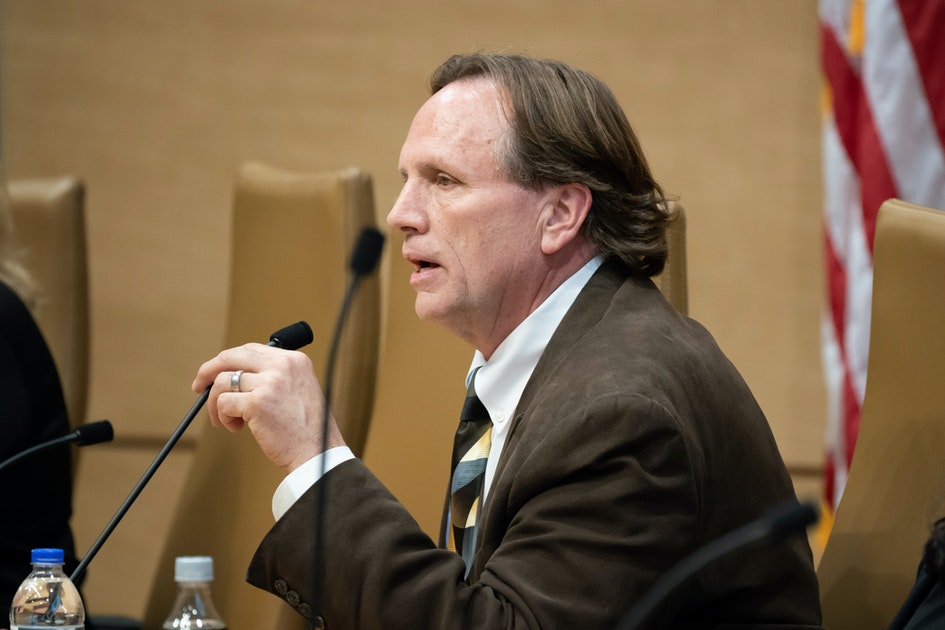
Minnesota’s staffing crisis in nursing homes got so dire last fall that members of the National Guard took shifts feeding and caring for residents.
Today, 23,000 job openings exist in long-term care in the state — roughly a fifth of the industry’s workforce — a situation that has caused some facilities to limit admissions, while others are closing down.
Minnesota legislators are now proposing sweeping remedies to fix the problem, including a Senate Republican package rolled out last week to spend $1 billion on pay raises for long-term care workers, personal care assistants, group home employees and services for people with disabilities.
“If you think: a billion dollars? That’s a lot of money. Yes it is,” said Sen. Jim Abeler, R-Anoka, the chief sponsor of the bill. “We have worked with all kinds of members and stakeholders to try and stretch it as far as it can go and do as much good as it can possibly do.”
But there’s a wide gulf on the issue between Republicans and Democrats, who say the Senate isn’t doing enough to address other needs exposed by the pandemic. That includes access to affordable child care across the state, a major roadblock to building back up the workforce from the toll of the pandemic.
“Child care is the workforce behind the workforce,” said Department of Human Services Commissioner Jodi Harpstead. “If we are to tackle the workforce crisis facing this state, meaningful investment in child care will need to be part of the solution.”
Under Abeler’s bill, nursing homes and senior facilities would get $358 million to go toward pay raises, which would amount to a roughly $2 increase for some workers in the field. Personal care assistants would see an 11% raise, while group homes and services for people with disabilities could see as much as 7% pay increases.
The Senate wants to spend an additional $322 million to recruit more workers to long-term care centers and group homes and as direct care providers by providing retention and hiring bonuses. Funds could be used to help train up to 20,000 new staff members, and the bill would make temporary licensing changes to allow previously licensed nurses to work in facilities.
At one point last fall, the long-term care industry was losing around 1,500 employees a month, with workers driven out in droves by the long hours and risks of the pandemic. Roughly three-quarters of providers are limiting admissions, despite a growing senior population in the state.
“It’s not that they don’t want to care for these individuals who come to their door, they just don’t have the staff,” said Libbie Chapuran with LeadingAge Minnesota, who added that 15 nursing homes have closed since 2019, and four in 2022 alone.
The staffing crisis is also hitting group homes, including 10 facilities operated by Cardinal of Minnesota that closed in southern Minnesota in March. Rochester City Council member Kelly Rae Kirkpatrick and her family were hit by the closure of a group home her sister lived in for years. Space and staffing issues have prevented the family from finding a new home for her sister, who has cerebral palsy.
“There are no beds in the county to meet my sister’s needs,” said Kirkpatrick.
Currently Kirkpatrick’s sister lives with her 77-year-old mother, a retired nurse, but that’s not a long-term solution for her family. Her mother is exhausted; Kirkpatrick spends about 20 hours per week caring for her sister, and it’s affecting her work on the city council.
“Our legislators have known this is going to be coming for years and they’ve done nothing about it,” she said. “The situation is dire, and the state really needs to address this.”
In February, Sen. Carla Nelson, R-Rochester, called on Gov. Tim Walz to bring in National Guard troops to respond to the group home closures in her district, similar to what he did with nursing homes in October. Since then, her constituents have found a home with the appropriate services, but the situation underscored the crisis facing these providers.
“The financial models are just unsustainable,” she said. “Most people would agree that one of the number one roles of government is to care for those who are most at risk and cannot care for themselves.”
DFL Gov. Tim Walz’s budget includes a 4% rate increase for personal care assistant wages, as well as funds to cover COVID safety improvements in long-term care facilities. He also wants to boost funding over the next three years for a successful program that helped cover upfront costs to train more than 1,000 certified nursing assistants this spring.
Democrats in control of the House are pushing measures similar to the governor in a $700 million health and human services package this session, including a rate increase for personal care assistants and safety upgrades for facilities.
They’re also investing in a workforce incentive fund for the industry to help cover retention, post-secondary costs, transportation and child care costs for workers. Rep. Jen Schultz, DFL-Duluth, a sponsor of the bill, said the divided Legislature passed a historic human services package last session that directed relief to long-term care, and the industry has seen direct aid from the federal government during the pandemic.
Their proposal this session is broader, she said, also addressing the behavioral health workforce, as well as mental health and community health workers.
“That was our priority this session, to address the health care workforce shortage,” she said. “There are some groups that have powerful lobbyists and have the power to lobby the Legislature, and there are some groups with no power and no voice and we need to represent those as well.”
Staff writer Trey Mewes contributed to this story.
